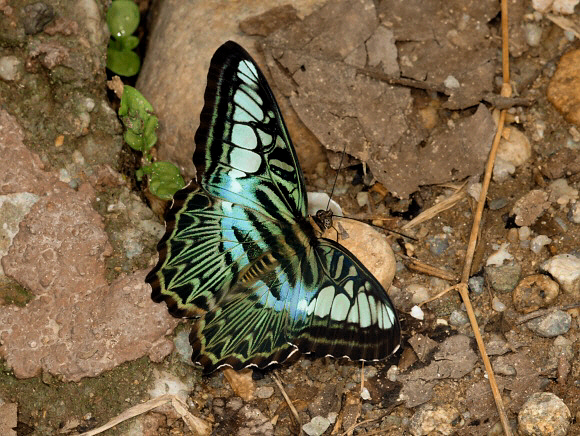
Introduction
The genus Parthenos comprises of 3 species, sylvia, tigrina and aspila. The latter 2 are endemic to Papua New Guinea, while sylvia in comparison has an extremely wide distribution being found in Sri Lanka, India, Myanmar, Thailand, Malaysia, Borneo, Sumatra, the Philippines, Sulawesi, Java, Bali, Papua New Guinea and Irian Jaya.
Habitats
This species is found in primary rainforest, usually in the vicinity of rivers, at elevations between sea level and about 300 metres.
Lifecycle
The larva is brown, speckled with white dots, and has broad greenish dorsal and lateral stripes. Each segment bears 4 multi-branched spines, purplish brown at the base and red on the outer half. The larval foodplants include Adenia ( Passifloraceae ) and Tinospora ( Menispermaceae ).
The chrysalis occurs in 2 forms, either pale green or dark olive. It is rather plain in appearance, without protuberances, and is suspended by the cremaster from beneath a leaf.
Adult behaviour
The Clipper is a powerful and fast flying butterfly. The flight consists of short periods of gliding, alternating every few seconds with shallow but rapid flickering wing beats.
On the Kinabatangan river in Borneo I have observed hundreds of these magnificent butterflies circling and gliding around tree tops along several kilometres of the river edge.
Both sexes commonly nectar at Lantana and other flowers. Males will also settle on the ground to imbibe moisture. If disturbed they fly up immediately, circle around at a height of about 3 metres, and then resettle nearby.
